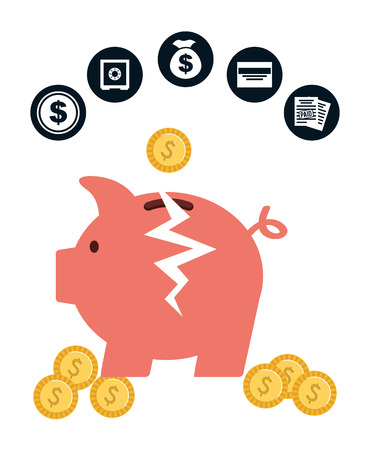Introduction to Safe Withdrawal Rates
When it comes to retirement planning in the United States, few concepts are as crucial—or as widely debated—as the safe withdrawal rate (SWR). The SWR essentially represents the percentage of your retirement portfolio that you can withdraw each year without running out of money over a given time horizon, typically 30 years. For American retirees, understanding and implementing a safe withdrawal rate is fundamental for ensuring long-term financial sustainability and peace of mind during their golden years.
But why does the safe withdrawal rate matter so much? The answer lies in the unique challenges faced by American retirees, including market volatility, inflation, healthcare costs, and increasing longevity. With Social Security often providing only a portion of needed income, most retirees rely on personal savings—such as IRAs and 401(k)s—to fill the gap. This makes an effective withdrawal strategy essential.
The concept of SWR gained mainstream attention through the “4% Rule,” developed from historical backtesting of U.S. market returns. However, real-world results can vary significantly depending on factors like asset allocation, market cycles, and individual spending needs. Exploring SWRs through a lens of American market history offers vital lessons for today’s retirees looking to balance spending and portfolio longevity.
Key Considerations for American Retirees:
| Factor | Why It Matters |
|---|---|
| Market Volatility | Sharp declines early in retirement can increase risk of running out of money. |
| Inflation | Rising costs erode purchasing power; withdrawals must account for this. |
| Healthcare Costs | Medical expenses tend to rise with age and are often underestimated. |
| Longevity Risk | Living longer than expected requires a more conservative approach to withdrawals. |
This article will delve into how backtesting various safe withdrawal rates using past decades of American market data can guide more resilient retirement strategies. By understanding these lessons from history, retirees can better prepare to enjoy financial security throughout their retirement journey.
2. Methodology of Backtesting
Backtesting Safe Withdrawal Rates (SWRs) involves a systematic analysis of how different withdrawal strategies would have performed during various periods of U.S. market history. The process is designed to simulate the retirement experience, assessing whether specific withdrawal rates would have allowed retirees to sustain their portfolios without running out of money over set time horizons, typically 30 years. This approach provides practical insights for Americans planning their financial future.
Data Sources
Robust backtesting requires reliable historical data reflecting actual market performance. Key sources include:
| Data Type | Common Source | Description |
|---|---|---|
| Stock Returns | S&P 500 Index, CRSP | Annual returns including dividends, adjusted for inflation. |
| Bond Returns | Ibbotson SBBI, U.S. Treasury Bonds | Total return from intermediate-term government bonds. |
| Inflation Data | CPI (Consumer Price Index) | Measures purchasing power and adjusts withdrawals to maintain real value. |
Process Overview
- Select Timeframes: Choose rolling periods (e.g., 1926–1955, 1950–1979) that reflect a range of economic conditions in the U.S.
- Portfolio Construction: Build portfolios with typical allocations (such as 60% stocks/40% bonds), rebalancing annually to maintain target ratios.
- Withdrawal Simulation: Each year, withdraw a set percentage (e.g., 4%) of the initial portfolio balance, adjusted annually for inflation based on CPI data.
- Outcome Assessment: Track whether the portfolio survives the entire period or depletes early (“portfolio failure”). Repeat across all starting years to assess success rates for each SWR tested.
Key Assumptions Used in Backtesting SWRs
- No Taxes or Fees: Assumes portfolios grow tax-deferred and incur no transaction costs—idealized but common for comparative studies.
- Consistent Withdrawals: Withdrawals are made at the beginning of each year and always adjusted for inflation to maintain real spending power.
- Annual Rebalancing: The portfolio is reset to its original allocation every year regardless of market movements.
- No Additional Contributions: The retiree does not add new funds after retirement begins.
- No Market Timing: Investments remain fully invested without attempts to time entries or exits based on market conditions.
The Value of Historical Backtesting for American Retirees
This methodology allows retirees and planners to see how different withdrawal rates would have fared through bull markets, bear markets, high inflation periods, and economic crises unique to American history. By grounding recommendations in decades of real-world U.S. data, backtesting helps Americans make informed decisions about sustainable retirement income strategies tailored to local realities.
![]()
3. Decade-by-Decade Review
To truly understand the reliability of safe withdrawal rates, it’s essential to look at how different strategies would have performed throughout various periods in U.S. financial history. The most common benchmark, the 4% rule, was designed based on historical market returns and inflation rates, but every decade brings its own challenges and opportunities. Let’s break down the results for each recent decade and see how both the 4% rule and alternative withdrawal rates fared.
| Decade | Market Conditions | 4% Rule Success? | Notable Risks/Benefits |
|---|---|---|---|
| 1970s | High inflation, moderate returns | Challenged (but generally survived) | Inflation eroded purchasing power; tight budgets required |
| 1980s | Bull markets, declining inflation | Very Successful | Strong equity returns supported higher withdrawals |
| 1990s | Sustained bull market, tech boom | Highly Successful | Portfolios often grew despite withdrawals |
| 2000s | Burst bubbles, two recessions | Struggled, especially with early retirements | Poor sequence of returns risk for new retirees; lower withdrawal rates safer |
| 2010s | Bull market recovery, low interest rates | Generally Successful | Equities performed well but bond yields were low; conservative approaches favored by some advisors |
| 2020s (so far) | Pandemic volatility, high inflation resurgence | TBD – caution warranted | Diversification and flexibility increasingly important as conditions rapidly change |
Key Insights:
- 1970s: Persistent inflation tested the limits of even conservative withdrawal rates. Retirees who stuck to 4% generally survived but had less spending power over time.
- 1980s & 1990s: Strong stock market performance allowed many retirees to not only preserve but grow their nest eggs even while withdrawing at a 4% rate.
- 2000s: Those retiring around market downturns faced significant “sequence of returns” risk—meaning even a safe initial withdrawal rate could become unsafe if markets crashed early in retirement.
- 2010s: Despite low interest rates on bonds, surging equities provided solid portfolio growth for most retirees following the 4% rule.
- 2020s: With renewed uncertainty, flexibility and ongoing monitoring are key to maintaining a safe withdrawal strategy.
This decade-by-decade review underscores why no single withdrawal rate is universally “safe.” Market cycles, inflation trends, and global events all play a role in shaping outcomes for retirees relying on their investments. Next, we’ll explore what these historical lessons mean for today’s retirement planning strategies.
Market Events and Their Impacts
Throughout American financial history, major market events have left a significant mark on safe withdrawal rate (SWR) outcomes. Recessions, bull markets, and high inflation periods each present unique challenges and opportunities for retirees relying on their portfolios. Understanding how these events have historically influenced SWR can provide crucial insights for anyone planning for retirement in the United States.
Recessions: Stress Testing Withdrawal Rates
Recessions often coincide with declining asset values and rising unemployment. For retirees, this means a potential double hit: portfolio balances fall just as withdrawals may need to increase to cover unexpected expenses. Backtesting shows that starting retirement just before or during a recession increases the risk of depleting savings early. For example, those who retired at the onset of the 2000 dot-com bust or during the 2008 financial crisis faced significantly lower sustainable withdrawal rates compared to those retiring during stable periods.
Bull Markets: Cushioning Portfolios
Bull markets, characterized by extended periods of strong stock market performance, generally support higher SWRs. Retirees who started withdrawals in the early 1980s or after the recovery from the Great Recession benefited from robust portfolio growth, which helped offset withdrawals and extend portfolio longevity. However, reliance on bull markets is risky; as history shows, they do not last forever and can give way to sharp downturns.
High Inflation: The Silent Threat
Periods of high inflation, like those seen in the late 1970s and early 1980s, erode purchasing power and put additional pressure on fixed-income assets. SWR backtests from these decades reveal that even seemingly conservative withdrawal rates struggled to keep pace with rapidly rising living costs. This highlights the importance of incorporating inflation-adjusted strategies into retirement planning.
Comparative Impact Table
| Market Event | Typical Effect on SWR | Historical Example |
|---|---|---|
| Recession | Decreases SWR; increases risk of early depletion | 2000-2002 Dot-Com Crash, 2008 Financial Crisis |
| Bull Market | Increases SWR; extends portfolio longevity | 1982-2000 Long Bull Market, 2010s Recovery |
| High Inflation | Erodes real returns; lowers effective SWR | 1970s Stagflation Era |
Key Takeaway:
No single market event defines all outcomes, but a blend of economic cycles makes it critical for retirees to plan flexibly. Diversification, dynamic withdrawal strategies, and regular reviews are essential safeguards against unpredictable market forces affecting retirement security.
5. Lessons Learned and Best Practices
Decades of backtesting safe withdrawal rates in American markets have yielded invaluable insights for retirees and financial planners. The key takeaways center around the importance of adapting to market conditions, understanding historical volatility, and building flexibility into retirement strategies.
Key Takeaways from Historical Backtests
- Market Volatility Matters: Backtests consistently show that portfolio returns vary significantly depending on the sequence and timing of market booms and downturns. Retirees who begin withdrawals during bear markets face a higher risk of depleting their savings early.
- The 4% Rule Isnt One-Size-Fits-All: While the classic “4% rule” worked for many historical periods, it is not universally fail-proof. Periods like the 1970s with high inflation or the early 2000s with low returns challenged its robustness.
- Flexibility Improves Outcomes: Adjusting withdrawal rates based on portfolio performance can significantly extend the longevity of retirement assets. Flexibility allows retirees to reduce withdrawals during poor market years and increase them when markets perform well.
Best Practices for Retirement Withdrawals
| Practice | Description | Benefit |
|---|---|---|
| Dynamic Withdrawals | Adjust withdrawal amounts annually based on actual portfolio performance and remaining life expectancy. | Reduces risk of running out of money; adapts to changing markets. |
| Diversification | Maintain a balanced mix of stocks, bonds, and other assets. | Smooths out returns; lowers portfolio volatility. |
| Cushion Strategies | Hold 1-3 years of living expenses in cash or short-term bonds. | Avoids selling investments at a loss during downturns. |
Incorporating Flexibility into Planning
The most resilient retirement plans incorporate “guardrails”—pre-set rules for increasing or decreasing withdrawals if the portfolio exceeds or falls below certain thresholds. This approach offers peace of mind and preserves purchasing power without rigidly sticking to an initial rate regardless of circumstances.
Summary
The lessons from decades of backtesting in U.S. markets highlight that no single withdrawal strategy guarantees success across all scenarios. Embracing flexibility, monitoring market conditions, and being willing to adjust are critical best practices for sustainable retirement income.
6. Limitations and Considerations
While backtesting safe withdrawal rates can provide valuable insights for retirement planning, it’s crucial to recognize its limitations and use the results as a guide rather than an absolute rule. Historical market data offers a rearview mirror perspective—it shows us what worked in the past, but it cannot guarantee future outcomes, especially in the dynamic landscape of American markets.
Potential Pitfalls of Backtesting
Backtesting relies on historical performance, which means several important considerations must be kept in mind:
| Limitation | Description |
|---|---|
| Sequence of Returns Risk | Periods of poor returns early in retirement can drastically affect outcomes, even if average returns are strong over the long run. |
| Changing Economic Conditions | Interest rates, inflation, and market valuations today may differ significantly from those in past decades. |
| Policy & Tax Changes | Future changes in tax laws or government policy could impact withdrawal strategies in ways backtests cannot predict. |
| Behavioral Factors | Emotional reactions to market volatility may lead retirees to deviate from their planned withdrawals. |
| Longevity Uncertainty | The possibility of living longer than expected introduces additional risk that past averages may not capture. |
The Importance of Individualized Strategies
No two retirement situations are exactly alike. Variables such as age at retirement, expected lifestyle expenses, healthcare needs, Social Security timing, and personal risk tolerance all play significant roles. As such, while a 4% withdrawal rate might have worked historically for a broad set of retirees in American markets, it may not be optimal for your unique circumstances.
Factors That Make Your Plan Unique:
- Retirement Age: Retiring earlier increases the number of years your portfolio needs to last.
- Spending Patterns: Some retirees spend more early on and less later (or vice versa), affecting optimal withdrawal rates.
- Other Income Sources: Pension income or part-time work can reduce reliance on portfolio withdrawals.
- Health Status: Medical costs can vary widely and are often unpredictable.
- Family Support: Potential needs to support family members or receive assistance yourself can impact financial plans.
Tying It All Together: A Dynamic Approach
The best use of backtesting is as a starting point—a way to understand how various strategies might have fared through different economic conditions. However, prudent retirees should regularly review their withdrawal plans with a financial advisor who understands their personal goals and adapts recommendations as market conditions and personal circumstances evolve. Flexibility and ongoing assessment are key components of successful retirement income planning in the U.S. context.
7. Applying Insights to Today’s Retirement Planning
Retirees in today’s market face a unique set of challenges, including lower expected returns on bonds, higher equity valuations, and greater longevity. Drawing on the lessons from backtesting safe withdrawal rates (SWRs) across past decades in American markets, we can extract practical strategies for those approaching or entering retirement now.
Lessons Learned from Historical Backtesting
Backtests reveal that while the traditional 4% rule has generally held up over long periods, there were notable exceptions during times of high inflation or severe market downturns. For example, retirees who began withdrawals during the late 1960s faced headwinds due to stagflation, while those retiring in the early 1980s benefited from high interest rates and subsequent strong market growth.
Implications for Current Retirees
With these historical contexts in mind, today’s retirees should consider a more flexible withdrawal approach that adjusts for changing market conditions. It is also crucial to diversify portfolios and include non-traditional asset classes where appropriate.
Actionable Advice: Safe Withdrawal Strategies Today
| Strategy | Description | Potential Benefit |
|---|---|---|
| Dynamic Withdrawals | Adjust annual withdrawals based on portfolio performance and spending needs. | Reduces risk of outliving assets during downturns; allows for higher spending when markets perform well. |
| Bucketing Approach | Segment assets into short-, medium-, and long-term “buckets” with different investment allocations. | Smoother cash flow management; reduces need to sell equities during bear markets. |
| Tilt Toward Inflation Hedges | Include TIPS, real estate, or commodities to protect against inflation risk. | Maintains purchasing power over time. |
| Lower Initial Withdrawal Rate (e.g., 3.5%) | Start with a slightly lower rate than the traditional 4%, especially in low-yield environments. | Adds margin of safety if market returns are below average. |
| Regular Review and Rebalancing | Annual review of portfolio allocation and withdrawal strategy. | Keeps plan aligned with evolving financial goals and market realities. |
Cultural Considerations for American Retirees
The American retirement landscape emphasizes individual responsibility, with Social Security serving as a partial income base. Given rising healthcare costs and longer life expectancies, it is essential for Americans to integrate flexible withdrawal methods with guaranteed income streams such as annuities or delayed Social Security claiming strategies.
Key Takeaway
The core lesson from decades of backtesting is adaptability. Rigid adherence to any single rule can be risky. By combining historical insight with proactive planning—adjusting withdrawals, diversifying assets, and regularly reviewing your strategy—today’s retirees can better navigate the uncertainties of modern retirement while securing their financial future.


